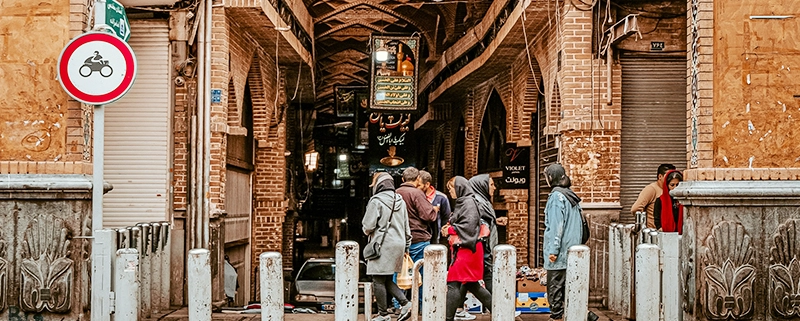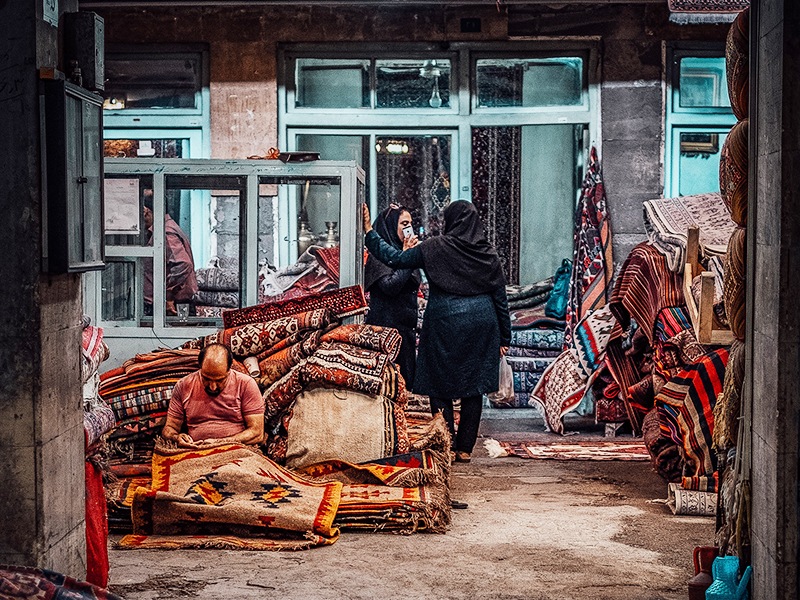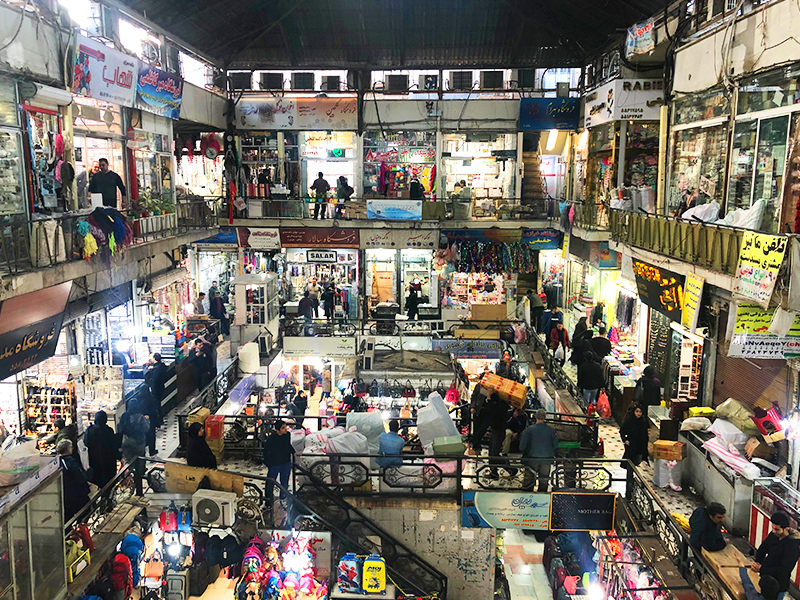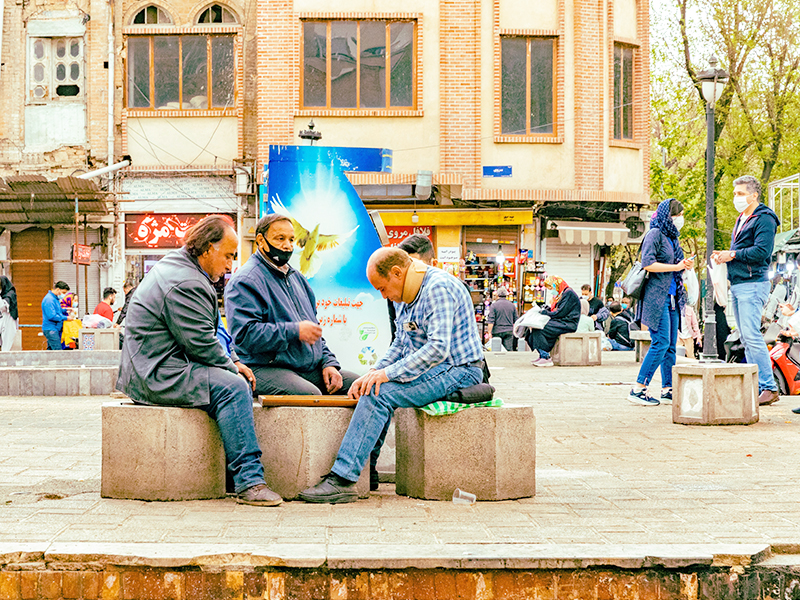Tehran Grand Bazaar (Photos, Reviews, Opening Hours)
Tehran Grand Bazaar is the beating heart of the city and the meeting point of culture, art, history, and economy of the capital. For many years, this market has woken up every morning with the hustle and bustle of business and comes to life with traffic, trade, and of course, tourists who are lost in its beauty and dynamism. This is the hangout of sellers who have come here from all over Iran intending to buy various goods, from cloth, clothes, and jewelry to spices and Persian handicrafts.
Meanwhile, there are always tourists who come here with the aim of visiting the historical and architectural monuments of the Tehran Bazaar. This market has been the center of important political and economic events throughout the history of Iran. Walking in the market is an important part of the history and culture of Tehran. In this article, we want to walk in the corridors, bazaars, and Timchehs of Tehran Grand Bazaar and get to know more about its atmosphere.
Grand Bazaar Tehran Architecture
The architecture of the Grand Bazaar in Tehran is a captivating fusion of various styles, reflecting the contributions of different dynasties and periods throughout its long history. As one of the oldest bazaars in the world, its architectural elements have evolved over the centuries, resulting in a unique and diverse ensemble of structures.
A dominant feature of the Grand Bazaar’s architecture is the influence of Islamic design. This is evident in the numerous domes, arches, and intricate geometric patterns that adorn the bazaar’s buildings. Islamic architecture often emphasizes symmetry, harmony, and decorative elements, which can be seen in the ornate facades and beautifully tiled entrances.
Traditional timber roofing is a notable architectural feature of the Grand Bazaar. Many sections of the bazaar have high, vaulted wooden ceilings that add to the charm and character of the market. These wooden roofs not only provide shade but also contribute to the bazaar’s unique ambiance, as sunlight filters through the spaces between the beams, creating captivating patterns on the ground.
The bazaar is dotted with courtyards and caravanserais, which serve as gathering places for traders and visitors. Caravanserais were historically used as resting places for merchants and their caravans during their journeys along the Silk Road. These structures typically feature central courtyards surrounded by arched passageways, providing shelter and security for travelers and their goods.
Grand Bazaar Tehran Cultural Value
The Tehran Grand Bazaar holds immense cultural value as a living testament to Iran’s rich heritage and traditions. With a history spanning over a millennium, the bazaar serves as a historical legacy, witnessing the nation’s evolution through the ages. Its architectural marvel, featuring domes, arches, and timber roofing, reflects a fusion of styles from different dynasties, showcasing Iran’s artistic prowess. The bazaar’s role as a hub of commerce and trade has facilitated cultural exchange with merchants from diverse regions, enriching the Iranian cultural tapestry.
As a social gathering place, the Grand Bazaar fosters a sense of community and camaraderie, embodying the spirit of Iranian hospitality. It has become a cultural symbol, featuring prominently in literature, art, and media, contributing to Iran’s national identity. Preserving and cherishing the bazaar is crucial for safeguarding the country’s cultural heritage and allowing visitors to immerse themselves in a living museum of Iran’s past and present.
How Old is the Bazaar in Tehran?
The Grand Bazaar in Tehran is estimated to be over a thousand years old. Its historical origins can be traced back to the 10th century during the Safavid dynasty, making it one of the oldest and most significant marketplaces in the world. Over the centuries, it has evolved and expanded to become the vast complex it is today, serving as a vital trading post along the Silk Road and a center of commerce and culture in Iran. Throughout its long history, the Grand Bazaar has weathered numerous challenges and changes, yet it has remained an enduring symbol of the nation’s heritage and vitality.
Tehran Grand Bazaar Reviews
The Tehran Grand Bazaar is a must-visit destination for tourists in Iran’s capital city. Many tourists rave about the vibrant atmosphere and unique shopping experience at the bazaar. They are impressed by the maze-like structure of the bazaar, with its narrow alleyways and countless shops selling a wide range of items, from Persian rugs and textiles to spices and jewelry. The bustling energy of the bazaar, combined with the friendly interactions with local shopkeepers, creates an immersive cultural experience for tourists.
Furthermore, tourists appreciate the opportunity to try traditional Iranian cuisine at the numerous food stalls and restaurants within the Tehran Grand Bazaar. From mouthwatering kebabs to aromatic saffron rice dishes, the bazaar offers a variety of delicious options. Visitors also enjoy sipping on Persian tea while taking a break from shopping, allowing them to soak in the unique sights and sounds of the bazaar. For many tourists, the Tehran Grand Bazaar is not only a shopping destination but also a window into Iranian culture and a memorable part of their travel experience.
Tehran Grand Bazaar Map
The Tehran Grand Bazaar is a sprawling, enchanting maze that can easily overwhelm even the most seasoned travelers. As one of the largest covered bazaars in the world, spanning over 10 square kilometers, navigating its labyrinthine alleys and finding specific shops or attractions can be a delightful challenge. To aid visitors in their exploration of this cultural and commercial gem, a detailed Tehran Grand Bazaar Map is an invaluable companion.
The Grand Bazaar’s layout is a historical tapestry woven with narrow alleys, interconnected passages, vibrant courtyards, and domed chambers. The map highlights the main entrances and key landmarks, such as mosques, caravanserais, and traditional bathhouses, each contributing to the bazaar’s unique character.
One of the essential features of the Tehran Grand Bazaar Map is the identification of various shops and stalls. With thousands of vendors offering an array of products, it can be challenging to locate a particular shop or find a specific item. The map may include a directory with a legend or numbering system indicating different shops and their specialties. This enables visitors to find everything from jewelry and textiles to spices and souvenirs with relative ease.
Tehran Grand Bazaar Opening Hours
You can visit the Bazaar during all working hours from 8 am to 11 pm. For a long tour in the Bazaar, one of the concerns can be finding rest and dining, but the interesting thing about Tehran Grand Bazaar is that in every direction, traditional grills and canteens are ready to serve you the best traditional and Iranian menu. Also, the roofed part of the Bazaar makes the buyers safe from the rain and sun.
The recommended hours for visiting this great Bazaar are between 2 pm and 5 pm, although the working hours of the inner parts of the Bazaar and its indoor parts start from Saturday to Wednesday at 8 am and continue until 5 pm. The Bazaar is closed on official holidays, and Thursdays are half-time. On Thursday, Tehran Bazaar starts at 9 a.m. and is active until 2 p.m.
Best Time to Visit Grand Bazaar Tehran
Spring is generally considered one of the best times to visit the Grand Bazaar. The weather is mild and pleasant, with blooming flowers and greenery adding to the charm of the city. During this time, the bazaar is less crowded compared to the summer months, making it easier to navigate through the alleys and enjoy a more relaxed shopping experience.
Similar to spring, fall offers mild temperatures, making it another favorable time to visit the Grand Bazaar. The weather is pleasant, and the colors of autumn create a picturesque setting in and around the bazaar. Grand Bazaar Tehran photos in autumn show this beauty well. It is also a time when the crowds are not as intense as during the peak tourist season.
Regardless of the season, visiting the Grand Bazaar during weekdays and in the mornings can help you avoid the busiest times. Also, be mindful of Iranian public holidays, as the Grand Bazaar can get extremely crowded during these times. It’s best to check the holiday calendar before planning your visit, especially if you prefer a more peaceful shopping experience.
Final Word
The Grand Bazaar Tehran stands as more than just a commercial center; it represents a microcosm of Iran’s soul and heritage. Its enchanting history, architectural marvels, cultural vibrancy, and commercial spirit make it a jewel in Tehran’s crown. A visit to the Grand Bazaar is not just a shopping excursion; it is a journey through time and a celebration of the human spirit of ingenuity and camaraderie that has thrived within its walls for generations. Undoubtedly, visiting the market and the important buildings around it can be a great opportunity to learn about an important part of the history and culture of Tehran.
Are you planning to travel to Iran? Please read things to do in Tehran and Check out our Iran tours.










Leave a Reply
Want to join the discussion?Feel free to contribute!